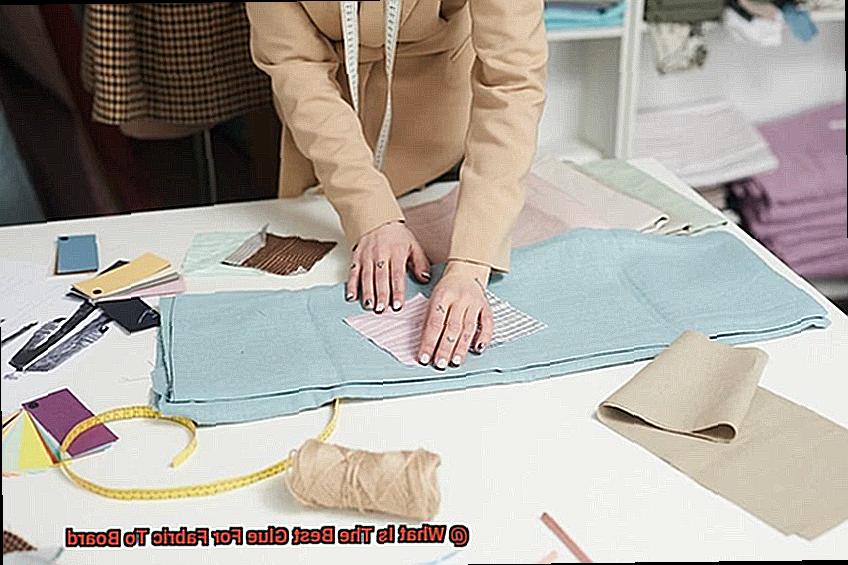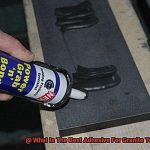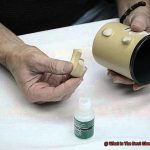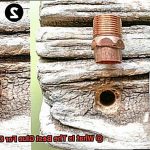If you’re on a quest to find the holy grail of glues for fabric-to-board bonding, look no further. The right adhesive can transform your projects from mediocre to magnificent in a heartbeat.
In this all-inclusive guide, we’ll dive headfirst into the captivating world of glues. We’ll walk you through a dazzling array of options, from the mighty E6000 to the versatile Mod Podge. Each adhesive will be dissected, revealing its unique strengths, weaknesses, and practical applications.
By understanding the distinct properties of these glues, you’ll be armed with the knowledge needed to make wise choices. Say goodbye to flimsy bonds and hello to robust and visually stunning fabric-to-board connections. And fear not – we’ve got your back with expert tips and tricks for seamless application. Prepare for frustration-free success on your creative journey.
Are you ready to unlock your artistic potential? Embark on this thrilling adventure as we uncover the ultimate glue for fabric-to-board magic.
Understanding the Type of Fabric
Contents
- 1 Understanding the Type of Fabric
- 2 Using Fabric Glue
- 3 Utilizing Spray Adhesive
- 4 Working with a Hot Glue Gun
- 5 Consider the Intended Use of the Project
- 6 Factors to Consider When Choosing a Glue
- 7 Different Types of Glues and Their Benefits
- 8 Tips for Applying Glue to Fabric and Board
- 8.1 Prepare Your Surfaces:
- 8.2 Choose the Right Glue:
- 8.3 Test Before Applying:
- 8.4 Apply Evenly:
- 8.5 Similarly, when applying glue to the board, aim for an even coverage over the entire surface that will be bonded to the fabric. Use a brush or a spreader tool to achieve a smooth and uniform layer of glue. Take your time to ensure an even application, as this will result in a stronger bond between the fabric and board.
- 8.6 Press Firmly:
- 9 Conclusion
To ensure a secure and lasting bond, it is essential to choose the right adhesive. With a wide range of options available, understanding the type of fabric being used becomes paramount. In this article, we will explore the significance of selecting the correct adhesive for different fabrics and discover popular glue options that cater to specific material needs.
Know Your Fabric:
Fabric selection is key when choosing an adhesive. Fabrics like cotton, polyester, silk, and denim are commonly used in crafting projects due to their diverse properties such as texture, weight, and stretchiness.
Consider Fabric Porosity:
The porosity of a fabric influences the adhesive choice. Fabrics like cotton tend to be more absorbent, necessitating a glue that can penetrate its fibers and create a strong bond.
Gentle Adhesives for Delicate Fabrics:
Delicate fabrics like silk or chiffon require a gentle adhesive that won’t compromise their integrity. Seek glues specifically designed for delicate materials to avoid damage or staining.
Waterproof Solutions for Moisture Exposure:
Projects exposed to moisture or requiring frequent washing demand a waterproof adhesive. This ensures that your creation remains intact even in damp conditions.
Fabric Glue: A Crafters’ Favorite:
Fabric glue is formulated exclusively for bonding fabrics together. It offers a clear and flexible bond, allowing fabric movement without compromising durability. Craft stores and online platforms offer a wide variety of fabric glues suitable for different material needs.
Spray Adhesive: A Quick and Strong Bonding Solution:
Spray adhesives provide an easy-to-use and strong bond between fabric and board. They work well on porous and non-porous surfaces, making them versatile options for various projects.
Hot Glue Guns: A Time-Tested Classic:
Hot glue guns are a popular choice among crafters due to their quick and secure bond. However, exercise caution when using them as their high temperatures may damage delicate or heat-sensitive fabrics.
Using Fabric Glue
Fabric glue is a versatile adhesive that opens up a world of creative possibilities in crafting and DIY projects. Whether you’re attaching fabric to fabric or bonding fabric to other surfaces like board, understanding how to properly use fabric glue is essential for achieving successful results.
In this guide, we’ll explore the process of using fabric glue, from choosing the right type of glue to troubleshooting common issues. By following these expert tips and techniques, you’ll be able to create projects that are both durable and aesthetically pleasing.
Choosing the Right Fabric Glue:
Before starting any project, it’s important to select the appropriate fabric glue. Consider the following factors:
- Permanent or Temporary Bond: Determine whether you need a permanent or temporary bond. Some fabric glues are designed for long-lasting adhesion, while others allow for temporary bonding that can be easily removed or repositioned.
- Fabric Compatibility: Different fabric glues work better with specific types of fabric. It’s crucial to test a small, inconspicuous area before applying the glue to the entire project to ensure compatibility and prevent any unwanted damage or discoloration.
Preparing Your Materials:
Proper preparation is key to ensuring a strong bond between fabrics. Follow these steps:
- Clean Both Surfaces: Remove any dirt, dust, or debris from both the fabric and the surface you will be applying the glue to. This will ensure optimal adhesion and prevent any particles from interfering with the bond.
- Smooth Out Wrinkles: Lay your fabric flat on a clean surface and smooth out any wrinkles or creases. A smooth surface ensures even application of the fabric glue and helps achieve a seamless bond.
Application Process:
Now that your materials are ready, it’s time to apply the fabric glue and bond your fabrics together:
- Gather Your Tools: Prepare all necessary materials, including the fabrics you want to bond, fabric glue, and any applicators like brushes or squeeze bottles.
- Apply Glue Evenly: Apply a thin, even layer of fabric glue to one of the fabric surfaces using a brush or applicator. Make sure to cover the entire area where the fabrics will be joined together.
- Press and Hold: Carefully place the two fabric surfaces together, aligning them properly. Press firmly and hold for a few seconds to ensure good contact between the glue and the fabrics.
- Let It Set: Allow the glued fabrics to set according to the manufacturer’s instructions. This usually involves letting it dry for a certain amount of time, which can vary depending on the fabric glue used. Avoid disturbing or moving the fabrics during this time to prevent weakening the bond.
Troubleshooting Tips:
If you encounter any issues or need to make adjustments during the bonding process, consider these tips:
Utilizing Spray Adhesive
Look no further than spray adhesive. This versatile adhesive offers a quick and easy way to achieve a strong bond between fabric and board, making it perfect for a wide range of applications. In this comprehensive guide, we will walk you through the step-by-step process of using spray adhesive, ensuring a seamless and professional result.
Gather Your Materials:
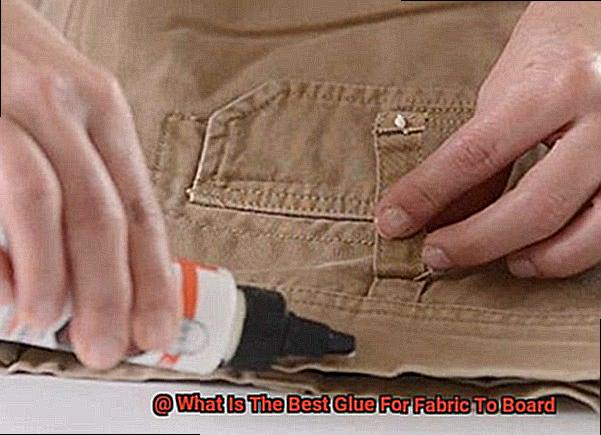
Before embarking on your fabric-to-board bonding journey, gather all the necessary materials. You will need:
- A suitable spray adhesive for fabric and board
- Clean fabric (cotton, polyester, silk, etc.)
- A smooth board or surface
- Optional: Protective gloves
Prepare Your Work Area:
Create an optimal work environment by ensuring that your space is clean and well-ventilated. Lay down a protective covering to safeguard your work surface from any adhesive mishaps.
Clean and Prepare the Surfaces:
To achieve a flawless bond, both the fabric and board must be pristine. Eliminate any dust or debris by giving them a thorough wipe-down with a lint-free cloth or using a vacuum cleaner.
Test the Adhesive:
Before proceeding with the full application, put the adhesive to the test on a small, inconspicuous area of your fabric. This precautionary step will help you determine if the adhesive reacts negatively or causes any unsightly discoloration.
Apply the Spray Adhesive:
Hold the can approximately 6-8 inches away from the fabric and board. Begin by spraying a light, even coat of adhesive onto the fabric. Exercise caution not to oversaturate the fabric, as this may result in stiffness or messiness.
Position and Press Down Firmly:
With precision and care, position the fabric onto the board, ensuring proper alignment. Begin pressing down firmly from the center, gradually working your way outwards. Employ your hands or a roller to eliminate any lurking air bubbles and guarantee a secure bond.

Allow Sufficient Drying Time:
Patience is key during the drying process, which will vary depending on the adhesive used. Consult the manufacturer’s instructions for guidance and resist the urge to disturb or manipulate the fabric, as this could compromise the bond.
Finishing Touches:
Once the adhesive has fully dried, inspect the fabric for any loose edges or areas that may require additional bonding. Apply more adhesive as needed and allow it to dry once again.
Working with a Hot Glue Gun
Crafting with a hot glue gun can unleash a world of creativity and possibilities. The versatility and convenience of this tool make it a favorite among DIY enthusiasts and professionals alike. In this guide, we will delve into the benefits of working with a hot glue gun, from its quick-drying capabilities to its strong bond and ease of use. Let’s explore how this simple yet powerful tool can elevate your craft projects to new heights.
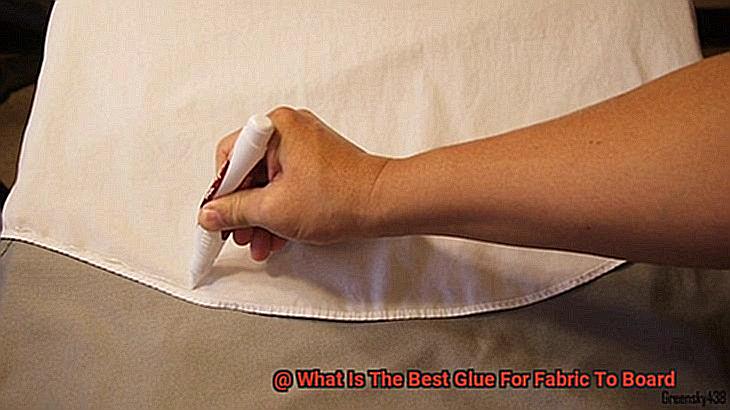
Quick-Drying Power:
One of the greatest benefits of using a hot glue gun is its rapid drying time. Unlike traditional adhesives that can take hours or even days to fully cure, hot glue dries within minutes. This means you can move on to the next step of your project without waiting for glue to set, saving you valuable time and increasing productivity.
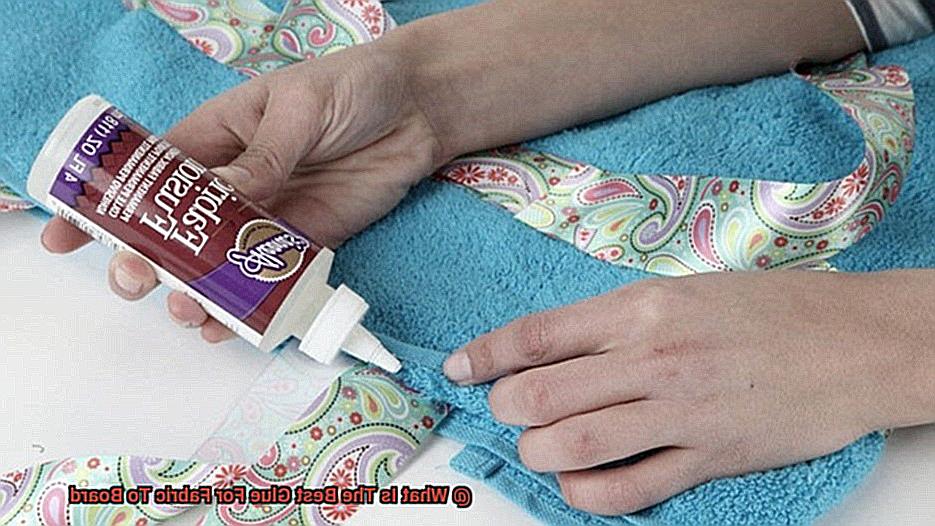
Strong Bond:
Hot glue is renowned for its exceptional bond strength. It forms a secure attachment between materials, ensuring that your creations withstand the test of time. Whether you’re attaching fabric to a board, embellishing a picture frame, or constructing a three-dimensional sculpture, hot glue provides the reliable hold you need for long-lasting results.
Versatility:
From paper and fabric to wood and plastic, a hot glue gun can adhere to a wide range of materials. This versatility allows you to explore various crafts and projects without the need for multiple adhesives. Whether you’re working on home decor, jewelry, or costumes, a hot glue gun can be your go-to tool for almost any application.
Ease of Use:
Using a hot glue gun is incredibly straightforward, making it accessible to crafters of all skill levels. Simply plug in the gun, wait for it to heat up, insert a glue stick, and you’re ready to create. The trigger mechanism allows precise control over the flow of glue, ensuring clean and accurate application. The ergonomic design of most hot glue guns also provides comfort during extended crafting sessions.
Reusability:
Unlike some adhesives that permanently bond materials together, hot glue offers a degree of reusability. If you make a mistake or want to change your design, you can often remove the hot glue with gentle peeling or by using a heat gun on low heat. This flexibility allows for experimentation and correction, giving you the freedom to explore different ideas without fear of irreversible damage.
Speed and Efficiency:
Hot glue guns are known for their efficiency in completing projects quickly. The fast-drying nature of hot glue means you can assemble and complete crafts in a fraction of the time it would take with other adhesives. This speed is especially beneficial for time-sensitive projects or when working on multiple pieces.
Consider the Intended Use of the Project
When it comes to bonding fabric to a board, not just any glue will do. Selecting the right adhesive is vital for the success and longevity of your project. This is where considering the intended use of your project comes into play. Let’s dive deeper into this topic and discover why choosing the perfect glue for fabric-to-board projects is essential.
Purpose and Function:
To begin, understanding the purpose and function of your project is crucial. Are you creating a fabric-covered bulletin board or a decorative wall hanging? For these types of projects, you’ll need an adhesive that can endure regular handling. Look for a multipurpose fabric glue or heavy-duty craft glue that guarantees a strong bond.
Durability:
For more permanent applications like upholstery or furniture restoration, durability is key. In these cases, opt for industrial-strength adhesives such as epoxy or contact cement. These powerful adhesives can withstand wear and tear over time, ensuring your project stands strong against the test of time.
Material Compatibility:
Not all glues work well with every type of fabric and board. Delicate fabrics like silk or chiffon require special attention. Seek out glues specifically formulated for these materials to ensure a secure bond without damaging the delicate fibers. Similarly, when working with porous or uneven surfaces like unfinished wood or corkboard, choose a glue with excellent filling properties to guarantee a strong bond.
Flexibility and Stretchability:
Flexibility is crucial if your project involves curved surfaces or wearable items like garments or accessories. You need an adhesive that can flex and move with the fabric without compromising its bond. Look for flexible adhesives that offer both strength and flexibility to accommodate these requirements.
Environmental Considerations:
Lastly, consider the environmental impact of your chosen adhesive. Some adhesives emit strong fumes during application, necessitating proper ventilation. If you’re working in an enclosed space or have sensitivities to certain chemicals, opt for low-odor or water-based adhesives. These alternatives provide a safer and more pleasant working environment.
Factors to Consider When Choosing a Glue
When it comes to choosing a glue, it’s essential to consider various factors to ensure a strong and lasting bond. From the type of material you’re working with to the environmental conditions in which the glue will be used, each factor plays a crucial role in determining the right adhesive for your project. In this article, we will explore the key factors to consider when selecting a glue and provide examples of different types of glues for various applications. By understanding these factors, you can make an informed decision and achieve the best results for your adhesive needs.
Material Compatibility:
One of the most critical factors to consider is the compatibility between the glue and the materials being bonded. Different glues work better on specific materials, such as wood, metal, plastic, or fabric. It’s important to choose a glue that is specifically designed for the materials you are working with to ensure proper adhesion.
Examples:
- Wood glue for bonding wooden surfaces
- Epoxy adhesive for metal-to-metal bonding
- Polyurethane adhesive for plastic-to-plastic bonding
- Fabric glue for fabric-to-fabric bonding
Strength:
The level of strength required for your application is another crucial factor. Consider whether you need a high-strength adhesive for heavy-duty applications or a more flexible adhesive for materials that require movement or flexibility.
Examples:
- Super glue (cyanoacrylate) for quick and strong bonds
- Construction adhesive for heavy-duty applications
- Flexible adhesive for materials that require flexibility
Environmental Conditions:
The environmental conditions in which the glue will be used should also be taken into account. Factors such as temperature, moisture, and exposure to UV radiation can affect the performance of certain glues. Choose a glue that is suitable for the specific conditions in which it will be used.
Examples:
- Waterproof adhesive for outdoor applications or areas prone to moisture
- Heat-resistant adhesive for high-temperature environments
- UV-resistant adhesive for applications exposed to sunlight
Drying Time:
Consider the drying time of the glue, especially if you have time constraints or need to move forward quickly with your project. Some glues dry quickly, allowing for immediate handling, while others require longer drying times.
Examples:
- Quick-drying adhesive for fast bonding
- Slow-drying adhesive for extended working time
Application Method:
The ease of application is another important factor to consider. Different glues come in various application methods, such as squeeze bottles, aerosol cans, or brush application. Choose a method that is convenient and suits your preferences and project requirements.
Safety:
Consider the safety aspects of the glue, including any precautions or safety measures that need to be taken during application. Some glues may have harmful fumes or require proper ventilation when used in enclosed spaces.
Different Types of Glues and Their Benefits
When it comes to crafts and DIY projects, choosing the right glue for fabric to board bonding is crucial for achieving a successful and durable result. With a wide array of options available, it can be overwhelming to select the most suitable glue. But worry not. This guide will take you through the various types of glues and their advantages when it comes to attaching fabric to board.
Fabric Glue: The Gentle Touch
Fabric glue is specifically formulated for bonding fabric to different surfaces, including board. This translucent adhesive dries rapidly and retains its flexibility once dry, ensuring that your fabric remains pliable. Ideal for lightweight fabrics, fabric glue provides a strong bond without adding bulk or stiffness. Whether you’re creating a fabric-covered bulletin board or a decorative canvas, fabric glue securely holds your fabric in place while allowing for easy manipulation.
Spray Adhesive: Convenience at Your Fingertips
Spray adhesives, available in aerosol cans, offer a quick and convenient method for bonding fabric to board. They provide an even application and are suitable for both large and small surfaces. The best part? Spray adhesives are often temporary and repositionable, allowing you to make adjustments before finalizing the bond. If you desire creative freedom and the ability to tweak your design, spray adhesive is the perfect choice.
Epoxy Glue: Power and Durability
For heavier fabrics or projects that demand a permanent hold, epoxy glue is the go-to option. Epoxy glues are renowned for their exceptional strength and durability, making them ideal for fabric to board bonding that requires extra resilience. Typically packaged as two parts that need to be mixed before use, epoxy glues undergo a chemical reaction when combined, resulting in a solid bond once cured.
Craft Glue: Versatility in a Bottle
Craft glues, such as white craft glue or PVA glue, offer versatility and can be used on various materials, including fabric and board. These glues dry clear and provide a strong bond, making them suitable for lightweight fabrics or smaller projects. Whether you’re attaching embellishments or creating mixed-media art, craft glues have got you covered.
Hot Glue Guns: The Ultimate Crafting Companion
Hot glue guns are beloved by crafters for their versatility and quick drying time. These guns melt solid glue sticks that solidify rapidly upon cooling, creating a strong bond between fabric and board. Hot glue guns can handle a wide range of materials, making them perfect for all your crafting needs. However, they may not be suitable for delicate fabrics or projects that require long-lasting bonds, as hot glue can become brittle over time.
Tips for Applying Glue to Fabric and Board
Look no further. In this comprehensive guide, we will share expert tips on how to apply glue to fabric and board, ensuring a strong and durable bond. Whether you’re creating a fabric bulletin board or a canvas masterpiece, these tips will help you bring your creative visions to life.
Prepare Your Surfaces:
Before applying glue, it’s crucial to prepare both the fabric and board surfaces. Start by cleaning the fabric to remove any dirt, dust, or stains that may interfere with the adhesion of the glue. Gently wash the fabric using a mild detergent and water, then let it dry completely. Similarly, ensure that the board surface is clean and smooth, free from any rough edges or imperfections. A clean surface provides a better bonding surface for the glue.
Choose the Right Glue:
When bonding fabric to a board, it’s essential to use a glue specifically designed for this purpose. Look for fabric or textile glues that offer flexibility, durability, and strong adhesion. These glues are formulated to work well with different types of fabrics and boards, ensuring a long-lasting bond. Read the labels carefully and choose a glue that meets your specific project requirements.
Test Before Applying:
To avoid any potential damage or discoloration, it’s wise to test the glue on a small, inconspicuous area of both the fabric and board. Apply a small amount of glue to the test area and allow it to dry according to the manufacturer’s instructions. Check if the bond is strong and if there are any adverse effects on the materials. This step ensures compatibility between the glue and your chosen materials.
Apply Evenly:
When applying glue to the fabric, aim for an even layer to prevent clumping or uneven distribution. Use a brush or a small roller to spread the glue evenly over the fabric surface. Make sure to cover the entire area that will be in contact with the board. Avoid applying too much glue, as it can seep through the fabric or create visible bumps.
Similarly, when applying glue to the board, aim for an even coverage over the entire surface that will be bonded to the fabric. Use a brush or a spreader tool to achieve a smooth and uniform layer of glue. Take your time to ensure an even application, as this will result in a stronger bond between the fabric and board.
Press Firmly:
After applying glue to both surfaces, carefully align the fabric with the board and press them together firmly. Start from one end and work your way to the other, using even pressure. Smooth out any wrinkles or bubbles using your hands or a roller, ensuring a tight bond between the two materials. Take care not to shift the fabric while pressing, as this can cause misalignment.
OuYjVBPoqzs” >
Also Read: What is the best glue to stick fabric to wood?
Conclusion
When it comes to finding the perfect glue for fabric to board, there are a few options that stand out from the rest. One of the top contenders is a fabric glue specifically designed for bonding fabric to various surfaces, including board. This type of glue is typically easy to use and provides a strong and durable bond.
Another popular choice is a multipurpose adhesive that works well on both fabric and board. These adhesives often come in the form of spray or liquid and offer versatility in application. They are known for their ability to create a secure bond between different materials, making them ideal for attaching fabric to board.
If you’re looking for something extra strong, an epoxy adhesive might be your best bet. Epoxy glues are known for their incredible strength and durability, making them suitable for heavy-duty projects. However, keep in mind that they may require more time to cure properly.
Regardless of which type of glue you choose, it’s essential to ensure that it is compatible with both the fabric and the board material. Additionally, always follow the manufacturer’s instructions for proper application and drying times.
In conclusion, there isn’t one definitive answer to what is the best glue for fabric to board as it ultimately depends on your specific project needs.

